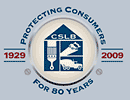Water and asphalt are two fundamental components that play a crucial role in constructing and maintaining roads, driveways, and parking lots. Understanding the relationship between these two elements is crucial to ensure the longevity and durability of these surfaces. In this article, we will explore the properties of water and asphalt, their interaction, and the impact of water on asphalt surfaces.
Asphalt Properties
Asphalt is a black, sticky, and highly viscous material derived from crude oil. It is commonly used in the construction of roads, driveways, and parking lots due to its durability, flexibility, and ability to withstand heavy traffic. Asphalt is a mixture of aggregates, including crushed stone, sand, gravel, and a binder, typically asphalt cement. The binder is a byproduct of the crude oil refining process and holds the aggregates together.
Positive and Negative Effects of Water on Asphalt Surfaces
When water comes into contact with asphalt surfaces, it can have both positive and negative effects. Positive effects include providing a cooling effect on hot asphalt surfaces and helping to reduce the amount of dust generated from the surface. However, negative effects include damaging the asphalt surface over time, resulting in cracks, potholes, and other forms of deterioration.
How Water Damages Asphalt Surfaces
One of the primary ways that water damages asphalt surfaces is through freeze-thaw cycles. When water penetrates the asphalt surface and freezes, it expands, causing it to crack and break. When the ice then melts, it leaves behind gaps and voids, which can lead to further damage. This process can be particularly damaging in colder climates where freeze-thaw cycles are common.
Another way that water damages asphalt surfaces is through the process of oxidation. Asphalt contains oils that help to keep it flexible and prevent it from becoming brittle. However, when water penetrates the surface, it can cause the oils to leach out, leaving the asphalt more susceptible to cracking and other forms of damage.
Preventing Water Damage to Asphalt Surfaces
To prevent water from damaging asphalt surfaces, it is essential to ensure that the surface is properly constructed and maintained. This includes ensuring that the surface is properly graded to allow for proper water drainage, regularly sealing the surface to protect it from water penetration, and filling any cracks or potholes as soon as they appear.
In addition to its effects on asphalt surfaces, water can also impact the quality of asphalt during production. The presence of water in asphalt mixtures can reduce the quality of the final product, resulting in lower durability and increased susceptibility to damage.
To prevent the negative effects of water on asphalt during production, it is essential to control the amount of water added to the mix. This can be achieved through specialized equipment, such as moisture meters, to ensure that the proper amount of water is added to the mixture.
Conclusion
Water and asphalt are two critical components in constructing and maintaining roads, driveways, and parking lots. To ensure the longevity and durability of asphalt surfaces, it is essential to properly construct and maintain them, including ensuring proper water drainage, regular sealing, and filling any cracks or potholes as soon as they appear. Additionally, controlling the amount of water added to asphalt mixtures during production is essential to ensure the quality and durability of the final product.
If you’re looking for reliable commercial asphalt paving contractors in Granite Bay, look no further than Todd Heldt Excavating, Inc. We offer quality asphalt paving services, such as asphalt repair and maintenance, line striping, and more. No matter what kind of asphalt paving project you need, we have the experience and expertise to get the job done right. Get in touch with us today to start your project.





